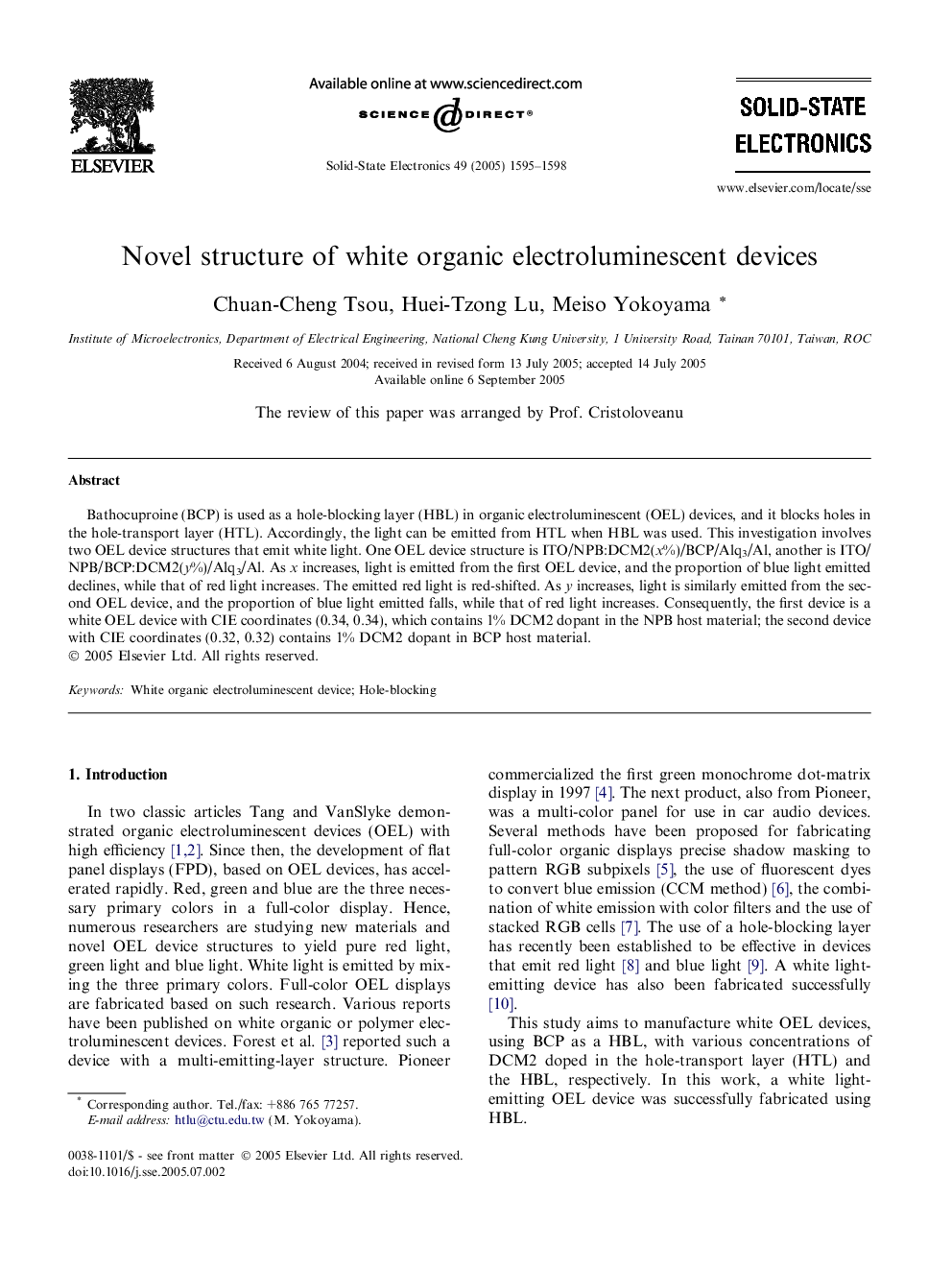| Article ID | Journal | Published Year | Pages | File Type |
|---|---|---|---|---|
| 10411652 | Solid-State Electronics | 2005 | 4 Pages |
Abstract
Bathocuproine (BCP) is used as a hole-blocking layer (HBL) in organic electroluminescent (OEL) devices, and it blocks holes in the hole-transport layer (HTL). Accordingly, the light can be emitted from HTL when HBL was used. This investigation involves two OEL device structures that emit white light. One OEL device structure is ITO/NPB:DCM2(x%)/BCP/Alq3/Al, another is ITO/NPB/BCP:DCM2(y%)/Alq3/Al. As x increases, light is emitted from the first OEL device, and the proportion of blue light emitted declines, while that of red light increases. The emitted red light is red-shifted. As y increases, light is similarly emitted from the second OEL device, and the proportion of blue light emitted falls, while that of red light increases. Consequently, the first device is a white OEL device with CIE coordinates (0.34, 0.34), which contains 1% DCM2 dopant in the NPB host material; the second device with CIE coordinates (0.32, 0.32) contains 1% DCM2 dopant in BCP host material.
Keywords
Related Topics
Physical Sciences and Engineering
Engineering
Electrical and Electronic Engineering
Authors
Chuan-Cheng Tsou, Huei-Tzong Lu, Meiso Yokoyama,
